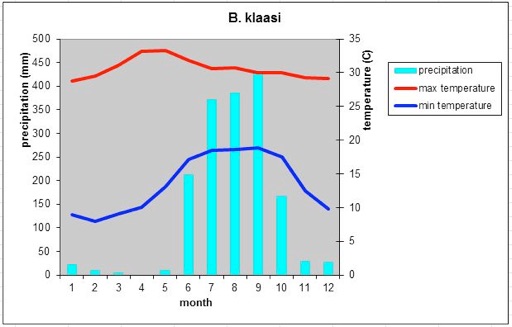





In 1991, Dr Gunter Schmidt received an adult male from Peter Klaas. This male was collected by K. Boehme from around Tepic, Mexico. In 1992 Peter Klaas send additional material, including an adult female to Dr Gunter Schmidt. This material was used to describe Brachypelmides klaasi. The tapered embolus of the male and the bipartite spermatheaca together with a thin pad of plumose satae on leg IV were the reason to make a new genus for this spider: Brachypelmides. In 2005 Locht et al made Brachypelmides a junior synonym of Brachypelma.
Brachypelma klaasi, adult female in burrow
Jalisco, Mexico.
Brachypelma klaasi, embolus from adult male Jalisco, Mexico.


Brachypelma klaasi, adult male Jalisco, Mexico.


Brachypelma klaasi, juvenile Jalisco, Mexico.
The distribution of Brachypelma klaasi is restricted to coastal Colima and Jalisco. This means i have my questions about the type locality of Tepic, Nayarit. Juvenile Brachypelma klaasi can be found in leaf litter while adults occupy deep burrows. It is worth noting that we found multiple males and females of Brachypelma klaasi wandering the roads during daytime.

Distribution of Brachypelma klaasi, Colima and Jalisco, Mexico.
This part of the pacific coast line is in the “Jalisco dry forest” eco region.

Habitat of Brachypelma klaasi, Colima and Jalisco, Mexico.

Climate graph compiled with data from: http://smn.cna.gob.mx


Burrow of Brachypelma klaasi, Jalisco, Mexico.



Unfortunate adult male Brachypelma klaasi, Jalisco, Mexico.
Adult female Brachypelma klaasi, Jalisco, Mexico.




